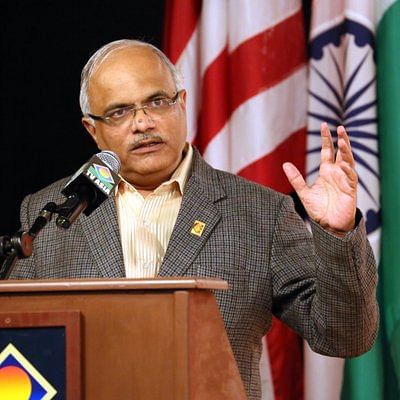In a letter addressed to the Vice-President Ansari, BJP MP Vinay Sahasrabuddhe has called for changes in the way reports are produced by Parliament’s Department Related Standing Committees. He has called the current approach to the reports “traditional” and “non-serious”.
Even though both financial and human resources are spent on the Department Related Standing Committees of Parliament, the panels continue to adopt “traditional, non-serious approach” to summarise proceedings in their reports, BJP MP from Rajya Sabha Vinay Sahasrabuddhe, has complained in a letter to Vice-President Hamid Ansari.
In a sharply worded letter to the Rajya Sabha chairman, Sahasrabuddhe said that most reports produced by the committees do not have any logical sequence. As is obvious, he said, conclusions must follow observations, and ultimately form the basis of the recommendations in the end.
The functioning of the DRSCs, especially the preparation of minutes and recommendations, have come under the scanner following Sahasrabuddhe’s criticism.
The DRSCs are bodies mandated to review the works of all government departments and ministries and make recommendations.
The MP said that the reports of the standing committees are limited to having advisory functions. However, given the resources spent on producing them, it is important that they be taken more seriously. He added that they must be presented in a more systematic and well-thought manner.
The MP said that he has sought the intervention of the chairman of the Rajya Sabha to help improve this state of functioning, and presented a detailed set of recommendations to this effect.
The report must be presented in a “structured format”, he wrote. The format requires officials to file the reports in three related but distinguishable parts. The first part should only consist of general observations, without any conclusions or recommendations. On the basis of the observations, conclusions should be drawn in the second part. The third part of the report should contain recommendations that are drawn from observations and conclusions.
Sahasrabudhhe has also suggested that, the “Action Taken Report” should have responses from all the concerned departments on the listed recommendations. “If a recommendation is not practical enough to be implemented, the department should assign reasons explaining the same,” the leader wrote.
In his bid to bring the inefficacy of the reports to light, Sahasrabuddhe had earlier also written to Satyanarayan Jatiya, chairman of the DRSC on HRD.
Picture courtesy: Sahasrabuddhe’s Twitter handle.






